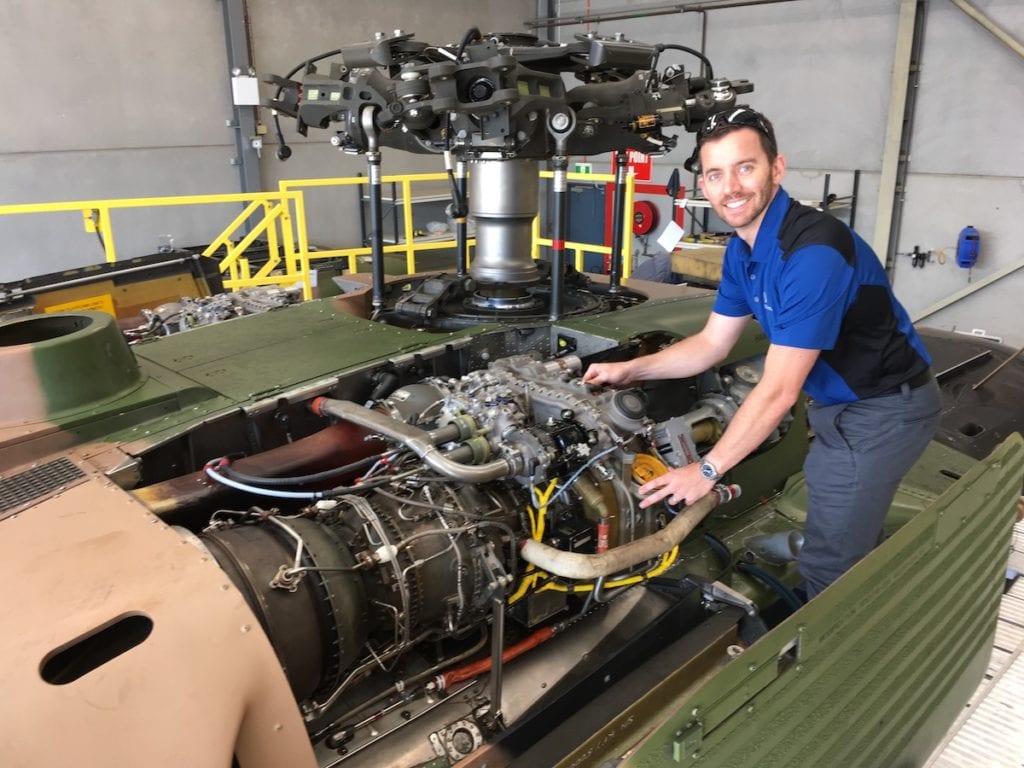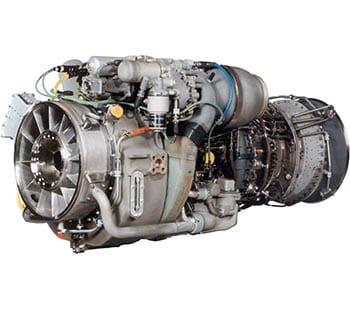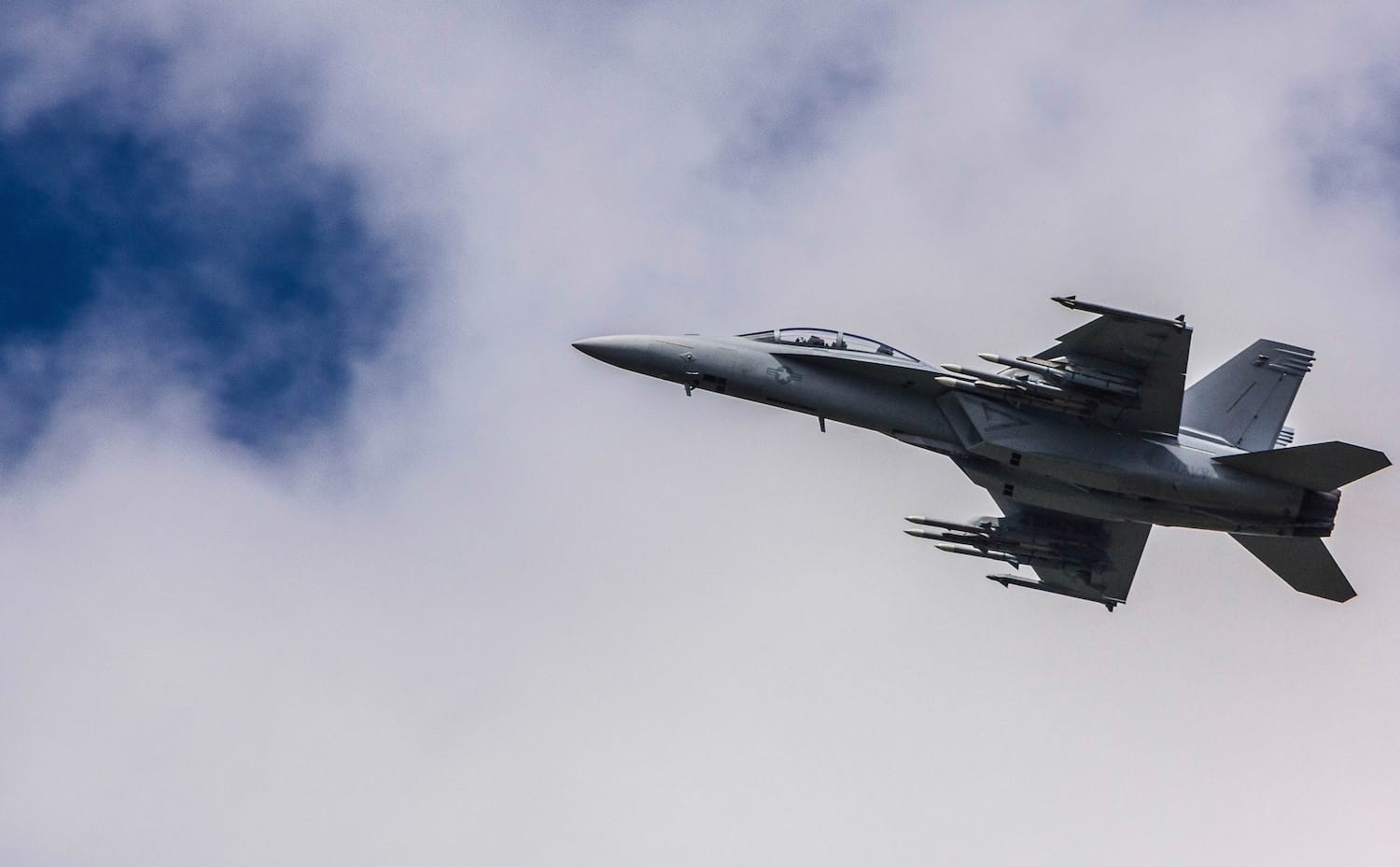Editor’s note: A version of this story by Natalie Filatoff originally appeared on GE Reports, a site that covers GE’s industrial transformation.
Time on wing (TOW) is an aircraft-engine term that conjures a sense of freedom and a glorious bird’s-eye view. In fact, it represents an eagle eye on fleet availability, required maintenance resources and the overall cost of running those engines. This year, GE field service engineers embedded with the Australian Army 6th Aviation Regiment and the Royal Australian Air Force Classic Hornet fleet observed sky-high times on wing for the engines under their care.
Three years ago, the GE T700 engines engines powering the Army’s 18 Sikorsky S-70A-9 Black Hawk helicopters at Holsworthy Barracks in southwestern Sydney flew an average of 200 hours before the required repair, service or removal. Today the helicopters are racking up an average of 1,000 flight hours.

Peter Miani, GE’s lead field service engineer for T700 engines in Australia and New Zealand, credits a “proactive maintenance culture” for his team’s time- and money-saving successes. Image: GE Reports
That’s a 400 percent increase in TOW. In aviation, a realm in which safety, reliability and performance can never be compromised, this is “just massive in terms of maintenance hours saved, money saved on unnecessary parts replacement and availability of aircraft to the Army,” says Peter Miani, GE’s lead field service engineer for T700s in Australia and New Zealand.
He estimates that in 2018 alone, the improvements in operation of the GE T700s will deliver the Australian Defence Force 2,500 saved person hours, and $5 million in cost savings, while the engines perform to the highest standard.
At RAAF Base Williamtown, north of Newcastle, where GE has long partnered with TAE Aerospace to provide Total Logistics Support (TLS) to the RAAF Classic Hornet (F/A-18) fleet, one GE F404 400 low-bypass turbofan engine recently clocked a staggering 1,923 hours TOW before requiring maintenance. That’s in a workshop that already routinely delivers an average 682 hours TOW for engines powering the Australian F/A-18 fleet, when some other nations achieve less than 200 hours.
In 2018 alone, the improvements in operation of the GE T700s will deliver the Australian Defence Force 2,500 saved person hours, and $5 million in cost savings.
The TLS contract covering the Classic Hornets has been delivered by GE and TAE for almost a decade. “Over the years we’ve had the opportunity to develop engineering initiatives that improve the performance of the engine and make sure that our engines run in the best possible configuration,” says Benjamin Nash, operations manager of the TLS contract and GE’s Southeast Asia team leader for field service.
One aspect of GE and TAE’s success in running the RAAF’s F404-400 is the partners’ research effort into revising allowable damage limits on engine parts that are not a reliability or safety concern.

One of GE’s T700 engines. Image: GE Aviation
For example, progressive extension of the limits on a component known as the flame holder, which literally holds the flame in the afterburner of the engine, has yielded data that supports a much longer lifetime for the part than may have traditionally been set. “We used to see 12-14 engines a year come into the workshop because of what appeared to be damaged flame holders, but with the new data-verified limits we’ve researched and implemented we’ve reduced that to two or three replacements a year,” says Nash. “We’ve done a lot of analysis to understand the failure mode and therefore apply more appropriate allowable damage limits to this and other parts.”
On a macro level, every such incremental extension and improvement in TOW goes hand in hand, with an excellent safety record. The safety and performance of Australia’s Classic Hornet fleet outclasses that of other fleets around the globe.
New data-verified research by embedded GE field service engineers is reducing arbitrary reasons to pull these aircraft engines apart, which often results in replacement of only half-worn components. The overview that GE field engineers have on how the company’s global engine fleets are running also offers clues and comparisons that inform new maintenance practices.
“After analyzing engine-performance data on the Black Hawks, we were able to replace a scheduled off-wing engine bay service with an on-wing borescope inspection,” says Miani. “Where the bay service took 138 hours, the borescope inspection takes just one hour.”
Miani credits “a proactive maintenance culture at 6th Aviation Regiment” with allowing money- and time-saving changes to be quickly and effectively incorporated into procedures. “An Army review of current maintenance policies in conjunction with consultation from GE engine field service software revealed several opportunities to significantly increase engine TOW,” he says. “In this case, Major Liam Cunningham, the senior engineering officer looking after the Black Hawks acknowledged what I was putting forward and really drove it home.”
Read the full article at GE Reports.


Share this: